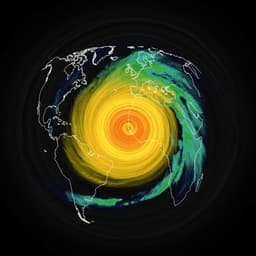
Earth Sciences
Wide range of possible trajectories of North Atlantic climate in a warming world
Q. Gu, M. Gervais, et al.
This exciting research by Qinxue Gu and colleagues reveals how decadal variability in the North Atlantic Ocean, influenced by anthropogenic radiative forcing, could lead to an unprecedented range of climate states. Utilizing advanced modeling techniques, they uncover the crucial role of ocean-atmosphere-sea ice feedbacks and the necessity of freshwater forcing in activating these mechanisms. Discover the implications for future climate projections and predictions!
~3 min • Beginner • English
Related Publications
Explore these studies to deepen your understanding of the subject.







